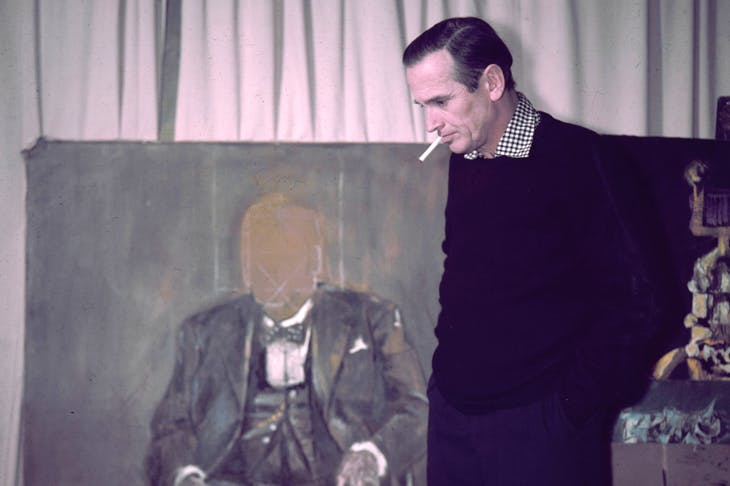Winston Churchill was no Adonis but most of his portraitists did what they could to flatter him. However, when the British artist Graham Sutherland (1903–80) was commissioned to paint a full-length portrait of Churchill in 1954 for 1,000 guineas (about £27,000 today), paid by the House of Commons and the House of Lords, and to be presented in a lavish public ceremony, things did not go well.
Sutherland was chosen not by Churchill but by members of the Houses of Parliament in honour of his 80th birthday. Churchill asked to be portrayed in his Knight of the Garter robes but the commissioners specified he be portrayed as he most commonly dressed when visiting Parliament. Sutherland prepared for the portrait by making charcoal sketches of his subject’s face and hands on several occasions at the Churchill home at Chartwell, in August 1954. For inspiration, Sutherland referred to one of Churchill’s many memorable quotes: ‘I am a rock.’

Churchill reluctantly accepts Graham Sutherland’s portrait in Westminster Hall in November 1954
The result, when it was revealed on November 20 1954 to Clementine Churchill, was not a smashing success. While Lady Churchill was said to have remarked that it looked ‘really quite alarmingly like him’, and Churchill’s son, Randolph, thought it made his father look ‘disenchanted’, the sitter himself hated it at once. On seeing a photograph of it, he called it ‘malignant … filthy’. Ten days before the official presentation, he wrote to Sutherland, rejecting the painting and declaring that the ceremony would not include it. He was persuaded only with great difficulty to accept the portrait at the ceremony in order to avoid causing offence. The presentation was to be televised, which meant Churchill was obliged to compliment the painting, though he did so with faint (one might say feint) praise, saying that it displayed ‘force and candour’ and was ‘a remarkable example of modern art’. One of his political opponents described it as ‘a beautiful work’, while an ally dismissed it as ‘disgusting’.
The work was destined for permanent display in the Houses of Parliament after Churchill’s death, but it was initially given to him as a gift. It was destroyed shortly thereafter, with news of its obliteration emerging only in 1978. Lady Churchill had hidden it in the cellar at Chartwell; at her request, the Churchills’ private secretary, Grace Hamblin, had it removed and secretly burned on a bonfire. Word came that this was not the first Churchill portrait his wife saw fit to condemn: those by Paul Maze and Walter Sickert also disappeared under her watch. Sutherland considered the destruction of his painting an act of vandalism, but when one considers that portraits, particularly official ones for public display, have always been a combination of visual record and propaganda, it is perhaps unsurprising that a likeness the subject did not consider flattering should have been suppressed.
Noah Charney’s The Museum of Lost Art is out now.






Comments